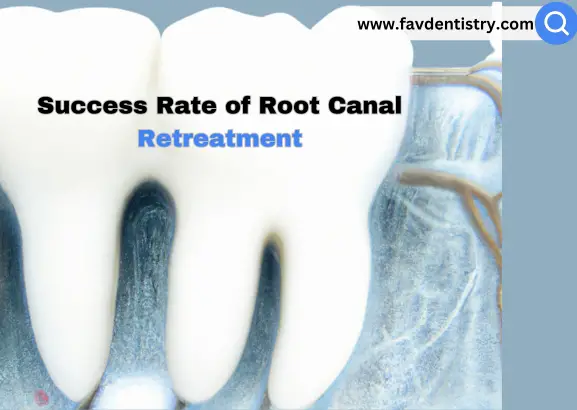Last Updated on 3 weeks by Dr. Michelle G. Brito
Root canal anterior is a procedure that focuses on treating the front teeth, while posterior root canal is performed on the back teeth. The anterior root canal involves the removal of infected pulp from the front teeth, which can cause pain and sensitivity.
On the other hand, the posterior root canal treats the back teeth, removing the affected pulp to relieve symptoms and save the tooth. Both procedures are essential in preserving natural teeth and ensuring oral health. The health of our teeth plays a significant role in our overall well-being.
When dental issues arise, it’s crucial to address them promptly to prevent further damage and discomfort. Two standard procedures used to treat tooth infections and restore oral health are anterior and posterior root canals. Understanding the differences and knowing which method is appropriate for specific dental conditions is essential. This article will provide an in-depth comparison of anterior and posterior root canals, including the procedures involved, the teeth they treat, and their benefits.
Understanding The Basics
Root canal treatment is an essential dental procedure that is commonly performed to save a tooth. The anterior root canal refers to the front teeth, while the posterior root canal pertains to the back teeth. These two types of root canals vary in terms of their location within the mouth.
Understanding the basics of root canal treatment is crucial for dental health. It involves removing the infected pulp and nerves from the tooth, cleaning and shaping the root canal, and finally sealing it to prevent further infection. Anterior root canals are found in the front teeth, while posterior root canals are located in the molars and premolars.
Both types of root canals require a skilled dentist to ensure a successful outcome. By choosing the appropriate treatment for each case, patients can enjoy long-term dental health and preserve their natural teeth.
Structural Differences
Root canal treatment is commonly performed on both anterior and posterior teeth. The structural differences between the two types can have an impact on the overall process and outcomes. One significant difference is the location and position of the tooth.
While anterior teeth are situated at the front of the mouth, posterior teeth are found toward the back. Another distinction lies in the number of canals. Anterior teeth typically have one canal, whereas posterior teeth can have two or even three canals.
The shape and complexity of the canals also vary between the two types. Anterior canals are often straighter and more superficial, while posterior canals can be curved and more intricate. Furthermore, the amount of dentin and enamel present differs. Anterior teeth tend to have less dentin and enamel compared to posterior teeth.
These structural dissimilarities influence the treatment approach and require dentists to adapt their techniques accordingly.
Diagnostic Challenges
Diagnostic challenges arise when determining the affected tooth and assessing the extent of decay. Navigating complex anatomy poses another obstacle, requiring precision and expertise. Obtaining accurate radiographs is crucial in order to ensure a precise diagnosis. These challenges demand a skilled and experienced dentist who can identify subtle differences between anterior and posterior root canal procedures.
By addressing these challenges, dentists can provide effective and successful treatments for their patients, ensuring optimal oral health and overall satisfaction. With proper diagnostic tools and a comprehensive understanding of dental anatomy, dentists can overcome these challenges and deliver quality care.
Anterior and posterior root canal procedures require a meticulous approach, and dentists must stay up-to-date with the latest advancements in diagnostic techniques to meet these challenges head-on. This ensures that patients receive the best possible dental treatment for their specific needs.
Treatment Procedures
Root canal treatment procedures differ when it comes to anterior and posterior teeth. Anesthesia and sedation are used to ensure patient comfort during the procedure. Isolation methods are utilized to prevent contamination and maintain a sterile environment. Access and preparation of the tooth involve removing the infected pulp and creating a pathway to the root canals.
Cleaning and shaping the canals are essential in removing bacteria and shaping them properly for filling. Irrigation and medication help eliminate any remaining debris and disinfect the canals. Finally, obturation and restoration techniques are used to seal the canals and restore the tooth’s functionality.
These steps vary depending on whether it is an anterior or posterior tooth. By following these protocols, dentists can effectively treat root canal infections and preserve natural teeth.
Success Rates And Longevity
Root canal procedures have varying success rates and longevity. Several factors influence the success rates of root canals. Anterior root canals have relatively high survival rates compared to posterior root canals. However, both types of root canals can experience complications that may require secondary treatments.
It is important to note that the success of a root canal also depends on individual circumstances and the expertise of the dentist. Understanding these factors is essential for patients considering root canal treatments to make informed decisions. By assessing the success rates and addressing potential complications, patients can have a better understanding of the long-term outcomes of their root canal procedures.
This knowledge can help them take the necessary steps to maintain oral health and prevent further dental problems.
Key Considerations And Patient Education
Root canal treatment in anterior and posterior teeth presents different considerations for patients. Understanding pain and discomfort during and after treatment is vital. Recovery and post-operative care play a crucial role in ensuring successful outcomes. Patients should be informed about the prognosis and expectations of the procedure.
Additionally, discussing the cost and insurance coverage is vital to address financial concerns. Regular follow-up appointments are crucial for monitoring the success of the root canal and ensuring ongoing oral health. By addressing these key considerations and providing thorough patient education, dental professionals can help alleviate patients’ concerns and ensure positive treatment outcomes.
Case Studies And Clinical Examples
Root canal treatment, a standard dental procedure, can be performed on either anterior or posterior teeth. Let’s explore two case studies highlighting the differences in treatment outcomes. In Case Study 1, we examine an anterior root canal, while Case Study 2 focuses on a posterior root canal.
By comparing these cases, we can gain valuable insights into the challenges and successes associated with each type of treatment. The aim is to provide a comprehensive analysis that sheds light on the nuances involved in anterior versus posterior root canal procedures.
Understanding these distinctions is crucial for both dental professionals and patients seeking the most effective and appropriate treatment for their specific needs.
Frequently Asked Questions Of Root Canal Anterior Vs Posterior
What Is The Difference Between the Root Canal Anterior And Posterior?
root canal anterior refers to the treatment of the front teeth, while root canal posterior is for the back teeth. The main difference lies in the complexity and difficulty of the procedure, with posterior root canals often requiring more time and expertise to complete successfully.
How Long Does A Root Canal Anterior Procedure Take?
the duration of a root canal anterior procedure can vary depending on factors such as the tooth condition and the patient’s specific needs. Generally, it can take between one to two hours, but complex cases may require additional sessions.
Are There Any Risks Associated With Root Canal Anterior Or Posterior?
Root canal procedures, whether anterior or posterior, are generally safe. However, there are rare risks, such as infection, damage to the surrounding teeth, or incomplete removal of the disease. It is crucial to choose an experienced dentist and follow post-treatment care instructions to minimize these risks.
Can A Root Canal Anterior Or Posterior Cause Pain?
While some discomfort is expected during and after a root canal procedure, both anterior and posterior root canals are performed using local anesthesia to minimize pain. Any lingering discomfort can generally be managed with over-the-counter pain relievers and should subside within a few days.
Q: How Successful Are Root Canal Anterior And Posterior Treatments?
A: root canal treatments, including both anterior and posterior procedures, have high success rates. When performed by a skilled dentist and accompanied by proper oral hygiene practices, these treatments can alleviate pain, save the tooth, and provide long-term relief from infection or decay.
Are There Any Alternatives To Root Canal Anterior Or Posterior Treatments?
In some cases, alternative treatments such as tooth extraction or dental implants may be considered instead of a root canal. However, it is crucial to consult with a dentist to determine the best course of action based on individual circumstances, tooth condition, and overall oral health.
Conclusion
Overall, understanding the difference between root canal procedures for anterior and posterior teeth is crucial. While both treatments aim to save a tooth and alleviate pain, they each come with their unique considerations. For anterior teeth, the accessibility and aesthetics play a significant role, often requiring a more delicate and precise approach.
On the other hand, posterior root canals are more challenging due to their complex anatomy and higher chances of requiring additional visits. Regardless of the location, seeking professional advice from a dentist is essential to determine the appropriate treatment plan.
Remember, a root canal is a valuable option to save a tooth and prevent further complications such as infections or extraction. By understanding the distinctions between anterior and posterior root canals, you can make informed decisions about your oral health and take the necessary steps to maintain a beautiful and healthy smile.





